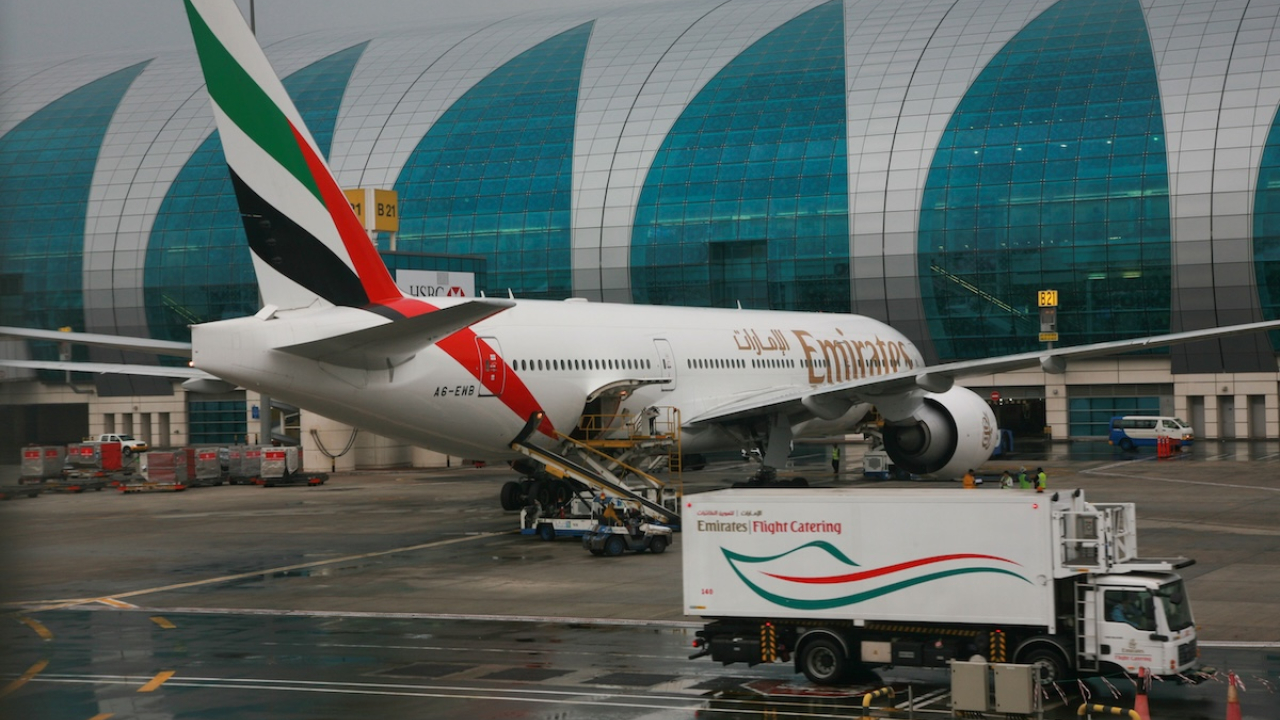Oman's Task Master
Newly-appointed CEO Con Korfiatis has accepted the challenge of turning the loss-making Oman Air into profit.

Oman Air CEO Con Korfiatis. IMAGE: Billypix
In early summer every year, something unusual happens on the south-west coast of Oman. The coastline around Salalah, Oman’s second city, catches the edge of the Indian Ocean monsoon. Rain and mist descend, lowering the temperature to around 25oC when the rest of the Arabian Peninsula is heading towards 45oC. The rain turns the scrubland in this part of the country green; streams and rivers even start to run through the region’s wadis.
This phenomenon is known as the “khareef”. And just as the “khareef” transforms the countryside, there are hopes that a new restoration plan can transform the fortunes of Oman Air.
The national carrier has been a loss-maker for years. The government has underwritten its losses, but made it clear some years ago that it intended to gradually reduce its financial support.
At the time of writing, precise financial figures for Oman Air’s 2023 performance had not been released, but airline chairman Saeed Al Mawali, who is also the country’s minister of transport, communications and information technology, said that losses were reduced by 25 per cent compared with 2022.
According to local media, he added that the improvement in the company’s financial performance had been achieved without resorting to borrowing from banks or receiving government support.
In late 2021, Oman Air’s then-CEO, Abdulaziz Al Raisi, told Arabian Aerospace the airline had successfully undertaken a transformation plan that had seen expenses substantially reduced, partly through renegotiation of contracts with major suppliers and by introducing multi-tasking for personnel. Overall, he said, this had seen the company’s costs slashed by a remarkable 29 per cent.
Late last summer, however, Al Mawali announced a new transformation plan, with greater emphasis on increasing yield and focusing on widebody aircraft, and break-even now planned for 2027.
Al Raisi, together with several senior executives and board members, left the company and, in May this year, Oman Air appointed Con Korfiatis, the former CEO of Saudi Arabian LCC Flyadeal, as its new boss.
During his seven years at Jeddah-based Flyadeal, Korfiatis expanded the carrier to a 30-strong fleet and it began to expand internationally.
So, what lies ahead for Oman Air?
“We’re a 30-year-old legacy airline that’s never really come into the modern era. That’s really the core of it,” Korfiatis told Arabian Aerospace at June’s IATA AGM in Dubai.
Like Al Mawali, Korfiatis reckons it will take three to four years to reach the point where the company is no longer loss-making.
Work to improve the airline’s performance had started before he arrived, he said. External consultants were brought in to create the strategy behind the transformation and a small group of personnel was put together to oversee it.
“The board decided that they needed a whole new management team and some more senior people are coming in the next few weeks.
“Transformation has its challenges. There are a lot of things that have to come together. Your whole eco-system and all your stakeholders have to come on the journey with you. There are some difficult decisions to make in that time, but improvement opportunities are most definitely there.
“We’ll come through the programme, and we’ll come through it in a better state than we are in today.”
The airline will have to “right-size”. This means looking at all the airline’s organisational structures, to get it to the point where it is a viable organisation that is fit for the modern era.
This will probably mean that some current staff are surplus to the requirements of the new, leaner company, but plans will likely be developed to re-deploy them. This could involve upskilling affected personnel, or trying to find positions for them elsewhere in the country’s aviation eco-system.
The transformation plan will require careful attention to the route network. Prior to Korfiatis’ arrival, Al Mawali announced that Oman Air would drop multiple routes, including several to the Indian subcontinent, while opening new ones or increasing frequencies on some existing sectors.
Like most Gulf carriers, Oman Air has significant amounts of traffic to and from the subcontinent, driven by a combination of workers travelling to and from expatriate posts in the region and ‘visiting friends and relatives’ traffic.
“Before I arrived there had been a look at the network and some significant changes made. There was some early stuff done about cost improvement and some progress was made late last year and in Q1 2024.
“We’re now looking at taking things to a much deeper level. We’re turning over a lot of stones that weren’t turned over in the first phase and we expect to see a lot more savings. I can already see a bunch of things.”
On the positive side, Korfiatis points to several factors that he intends to ensure are retained in the company. “From a customer-facing perspective, we’ve got something really sound – a good soft product, good catering and one of the best on-time performance ratings in the region.”
Backing up the CEO’s estimation is the fact that Oman Air regularly wins industry awards for the quality of its product, notably for its in-flight staff and its business class cabin.
Oman Air has always had a mix of point-to-point and transit routes, said Korfiatis. “With the schedule adjustments we’ve made, it’s a little more biased towards point-to-point, but transit routes are still important to us.”
Much of that point-to-point traffic is tourism, which Oman wants to develop, aiming to almost double its current annual total of almost six million visitors to 11 million by 2040. New hotels are being built and the government sees Oman Air as an important enabler of the tourism sector.
Oman Air operates into four domestic airports at present, while other airstrips in the country currently lack terminals and infrastructure: “There are opportunities to develop traffic to those areas that are under-exploited.”
The new airport in the capital, Muscat, provides a good experience for originating and departing passengers, as well as those transiting, said Korfiatis. Both types of flights remain relevant and “I don’t see us biasing to one more than the other.”
When it comes to its fleet, Oman Air has an all-Boeing inventory, consisting of Boeing 787-8s and -9s for long-haul services and a mix of 737-800s, -900s and MAX 8s for shorter routes. In March, the airline stopped flying its 10 Airbus A330-200 and -300s. At the time of writing, three of the Airbuses were grounded, while the other seven were leased to Qatar Airways, to provide it with additional capacity.
“That’s less about a long-term fleet decision, more about the fact that no transformation I’ve seen succeeds through growth,” Korfiatis explained. “You’ve got to strip away things, fix the foundations and then grow.”
In the longer term, there has to be fleet simplification, he added. “We’ve got two different types of 787 with three [cabin] configurations and two types of A330s with three configurations. We’ve got to simplify the fleet.”
A decision on whether to base the long-haul fleet around either the 787 or the A330 will be made soon: “That’s something we’re running numbers on right now.”
The older 737s “come off-lease progressively from this year to 2026, and we will be all MAX. At some point, we will need more narrowbodies.”
The airline carried more than six million passengers last year. With the adjustments that have already been made to the fleet, “It will be less this year, but in the medium term, once we’ve got through the transformation, we need to be performing, we will get back to growth. In Vision 2040 for Oman, aviation is an enabler. We will grow to be a larger airline than we were.”
Just as the “khareef” brings green shoots of growth to the Omani countryside, Oman’s government will be hoping that the transformation plan also spurs new growth in the national carrier.
Stay up to date
Subscribe to the free Times Aerospace newsletter and receive the latest content every week. We'll never share your email address.


